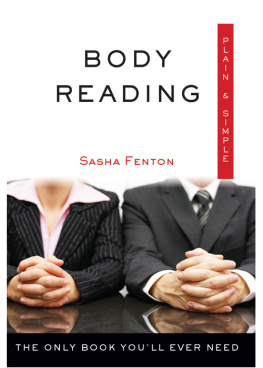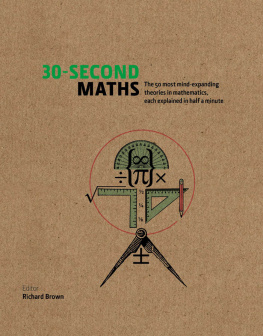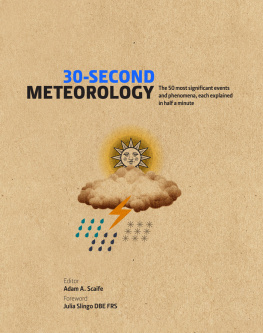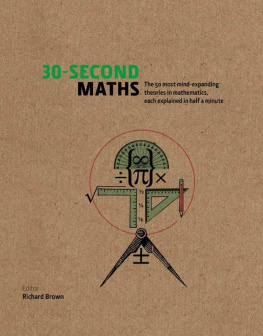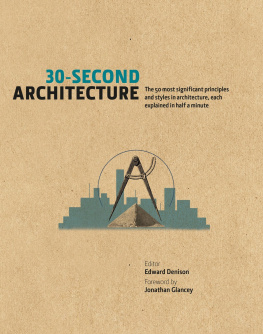Sarah Fenton - 30-Second New York: The 50 key visions, events and architects that shaped the city, each explained in half a minute
Here you can read online Sarah Fenton - 30-Second New York: The 50 key visions, events and architects that shaped the city, each explained in half a minute full text of the book (entire story) in english for free. Download pdf and epub, get meaning, cover and reviews about this ebook. year: 2017, publisher: Ivy Press, genre: Politics. Description of the work, (preface) as well as reviews are available. Best literature library LitArk.com created for fans of good reading and offers a wide selection of genres:
Romance novel
Science fiction
Adventure
Detective
Science
History
Home and family
Prose
Art
Politics
Computer
Non-fiction
Religion
Business
Children
Humor
Choose a favorite category and find really read worthwhile books. Enjoy immersion in the world of imagination, feel the emotions of the characters or learn something new for yourself, make an fascinating discovery.

- Book:30-Second New York: The 50 key visions, events and architects that shaped the city, each explained in half a minute
- Author:
- Publisher:Ivy Press
- Genre:
- Year:2017
- Rating:4 / 5
- Favourites:Add to favourites
- Your mark:
- 80
- 1
- 2
- 3
- 4
- 5
30-Second New York: The 50 key visions, events and architects that shaped the city, each explained in half a minute: summary, description and annotation
We offer to read an annotation, description, summary or preface (depends on what the author of the book "30-Second New York: The 50 key visions, events and architects that shaped the city, each explained in half a minute" wrote himself). If you haven't found the necessary information about the book — write in the comments, we will try to find it.
Sarah Fenton: author's other books
Who wrote 30-Second New York: The 50 key visions, events and architects that shaped the city, each explained in half a minute? Find out the surname, the name of the author of the book and a list of all author's works by series.
30-Second New York: The 50 key visions, events and architects that shaped the city, each explained in half a minute — read online for free the complete book (whole text) full work
Below is the text of the book, divided by pages. System saving the place of the last page read, allows you to conveniently read the book "30-Second New York: The 50 key visions, events and architects that shaped the city, each explained in half a minute" online for free, without having to search again every time where you left off. Put a bookmark, and you can go to the page where you finished reading at any time.
Font size:
Interval:
Bookmark:
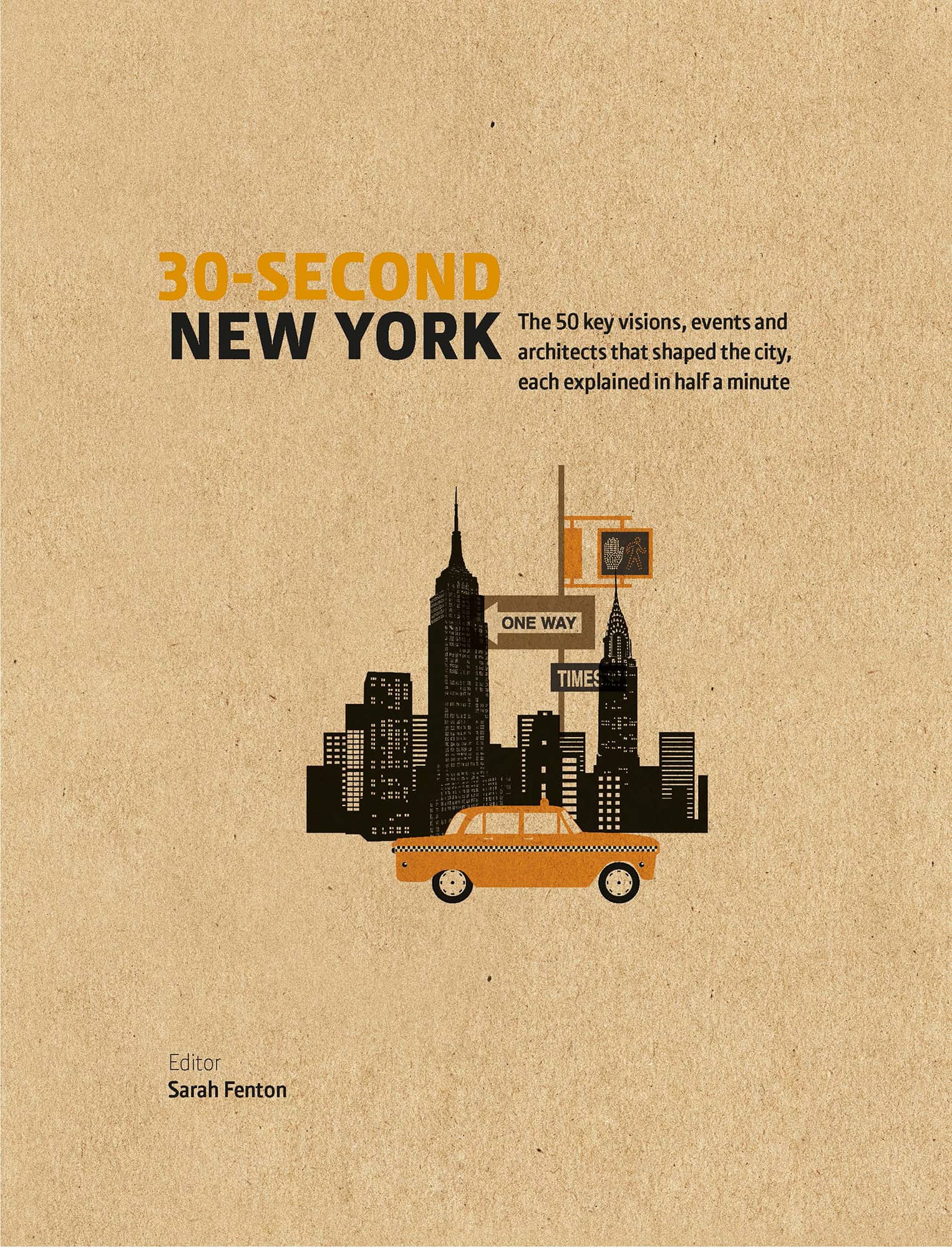
NEW YORK
The 50 key visions, events and architects that shaped the city, each explained in half a minute
Editor
Sarah Fenton
Contributors
Sarah Fenton
Cheong Kim
Andrew Kryzak
Matthew Gordon Lasner
Chris McNickle
Christopher Mitchell
Patrick Nugent
Nancy Green Saraisky
Aaron Shkuda
Jennifer Shalant
Michael Willoughby
Illustrations
Nicky Ackland-Snow


First published in the UK in 2017 by
Ivy Press
Ovest House
58 West Street
Brighton BN1 2RA
United Kingdom
www.quartoknows.com

Copyright The Ivy Press Limited 2017
All rights reserved. No part of this publication may be reproduced or transmitted in any form by any means, electronic or mechanical, including photocopying, recording or by any information storage-and-retrieval system, without written permission from the copyright holder.
British Library Cataloguing-in-Publication Data
A catalogue record for this book is available from the British Library.
Digital edition: 978-1-78240-541-2
Hardcover edition: 978-1-78240-453-8
This book was conceived, designed and produced by
Ivy Press
Publisher Susan Kelly
Creative Director Michael Whitehead
Editorial Director Tom Kitch
Art Director James Lawrence
Project Editor Jamie Pumfrey
Designer Ginny Zeal
Commissioning Editor Sophie Collins
Glossaries Charles Phillips
Sarah Fenton
New York Citys only humble feature is its origin story: this is a place created by accident. When Henry Hudson sailed into what is now New York Harbor in September 1609, he was searching not for political, religious or even individual freedom, but for a faster trade route to China, on behalf of a multinational corporation. Plymouth, Virginia, Massachusetts and Maryland North Americas other early colonies had their differences, but all were founded as deliberate, earnest and unitary communities: culturally homogenous and overwhelmingly English. Not so New Amsterdam (as New York City was first christened). A Dutch outpost, it was a capitalist settlement with meagre and merely material ambitions. By the 1650s, it was home to a motley crew of inhabitants Dutch, Walloons, multiracial Brazilians, French, English, Portuguese, Swedes, Finns and Jews among them said to speak at least 18 languages and practise sundry religions. The English fleet that captured (and renamed) New Amsterdam in 1664 took possession of the most disorderly and contentious village on the eastern seaboard.
Over the course of the next century, the colonies generally and New York particularly would develop in ways that set them increasingly at odds with the Crown. Colonial New York was competitive, fragmented and characterized by a high degree of popular participation in politics. Still, the American Revolution astonished imperial Britain and has astonished historians ever since. A window into the aftermath of that revolution can be found in Chapter 2 through the biography of Alexander Hamilton. One wonders what Hamilton immigrant, lover of commerce and cities would have made of the unparalleled rates of immigration, industrialization and urbanization that characterized his city during the late nineteenth century. By the end of that century, New York was the fastest-growing city on the globe and its Lower East Side the worlds most densely inhabited neighbourhood; by 1930, it had surpassed London as the worlds largest city. The cultural and financial capital of the world throughout the second half of the twentieth century, New York City is still home to the worlds two largest stock exchanges a fact that would surely have astonished Henry Hudson and the Dutch West India Company that employed him: they saw the citys financial future as limited to the international market in beaver skins.
In response to the citys dizzying pace, its sheer size and bottomless diversity, you might well ask, how can all of that fit into this slim volume? The short answer is: it cant. This book does not pretend to encyclopaedic coverage. Instead, it is a friendly introduction to the worlds greatest city. Welcome to New York.
30-Second New York is divided into seven chapters, each one split into anything from six to nine topics and one biography. The topics are covered in three sections: the longest, the 30-Second Tour, provides a narrative arc beginning, middle and where we are now in a condensed space. To the left lies the 3-Second Survey summarising the topic while the 3-Minute Overview assesses the subjects overall significance or pulls out an emblematic detail for further reflection. To the right of the 30-Second Tour, youll find suggestions for a few related entries perched atop two or three brief biographies of figures central to the subject. Each of these elements is a puzzle piece; putting them together page by page will give you a steady grasp of individual subjects in many cases well have managed not to sate your curiosity but to stoke it, which is all for the better.
The topics in the book appear more or less chronologically, from land formation to peopling that land; then to governing the people and improving the land; and finally experiencing the city, studying and entertaining it. although you dont need to read the book straight through its not a linear narrative. Much like life outside the pages of a book, subjects within the book overlap one another chronologically, thematically, topically and biographically. Certain characters (Teddy Roosevelt, say, or James Baldwin) exit the stage of one entry only to make a welcome return in another. Structures and events reappear in entries that would seem to have little in common save the city they share: the Statue of Liberty, Brooklyn Bridge and Empire State Building earn multiple mentions, as (less glowingly) do the 1863 Draft Riots.
I have a long-running debate with Edward Denison, the editor of the London edition in this series, regarding the relative merits of each others cities. He argues well on behalf of Londons historical significance and sweep; having lived in both cities, I will grant him that. The claim I would make on New Yorks behalf is a claim of vitality of energy and reinvention, of the constant possibility of change. More languages are spoken here than in any other city in the world; maybe tomorrow Ill begin learning one of them. Every religion and every racial and ethnic group is represented here: it is the superlative urban laboratory, an experiment to discover whether all the worlds peoples can live side by side in a single place. To step outside your cramped, overpriced, possibly roach-infested New York City apartment is to wonder if the man hurrying beside you in the sober grey suit could tear his shirt off at any moment to reveal a superheros cape beneath it. There see that girl looking lonesome on a Central Park bench? She might burst suddenly into song, as if all of life really were a musical. Anything can happen here. So much already has, much of it captured, however fleetingly, in the pages of this book.
Font size:
Interval:
Bookmark:
Similar books «30-Second New York: The 50 key visions, events and architects that shaped the city, each explained in half a minute»
Look at similar books to 30-Second New York: The 50 key visions, events and architects that shaped the city, each explained in half a minute. We have selected literature similar in name and meaning in the hope of providing readers with more options to find new, interesting, not yet read works.
Discussion, reviews of the book 30-Second New York: The 50 key visions, events and architects that shaped the city, each explained in half a minute and just readers' own opinions. Leave your comments, write what you think about the work, its meaning or the main characters. Specify what exactly you liked and what you didn't like, and why you think so.

